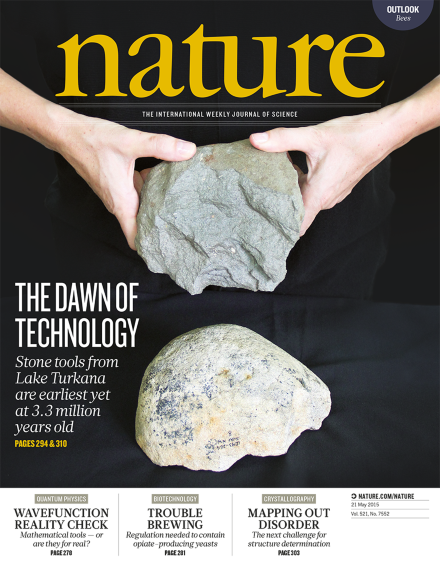Volume 521 Issue 7552, 21 May 2015
Editorial
World View
Research Highlights
Social Selection
Seven Days
News
News Feature
Comment
Books & Arts
Correction
Correspondence
Obituary
News & Views
-
Tools go back in time
Collection:

